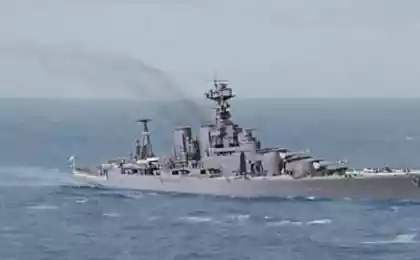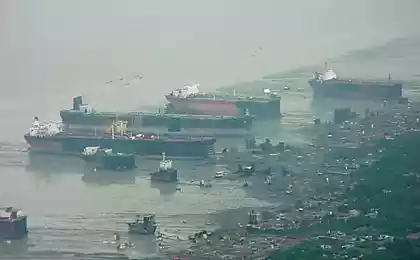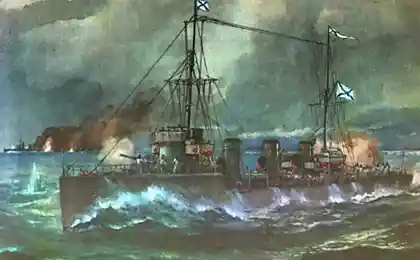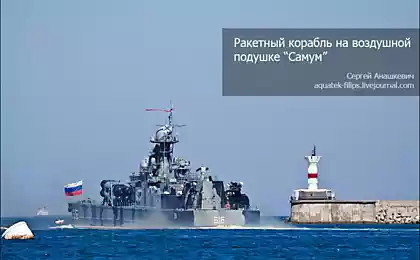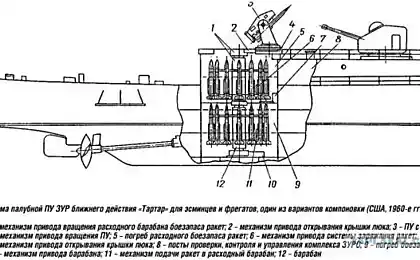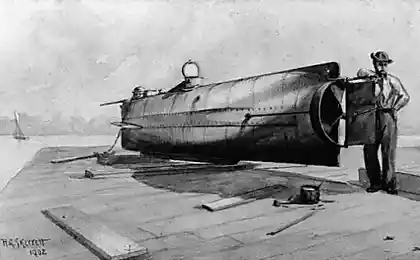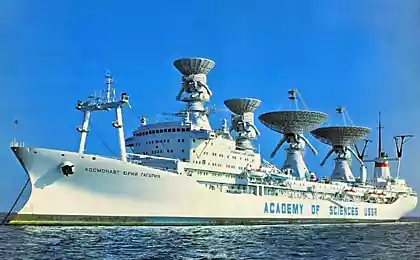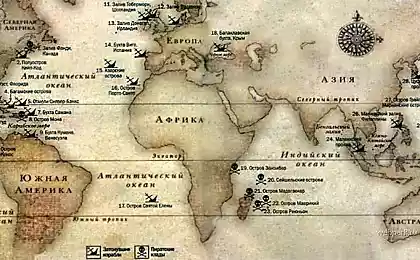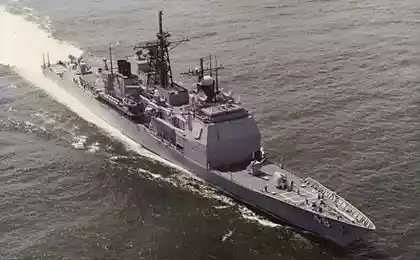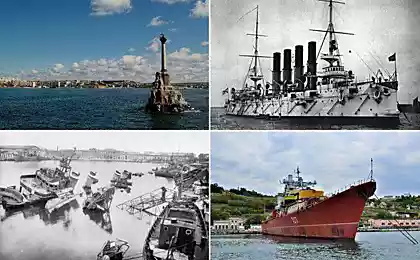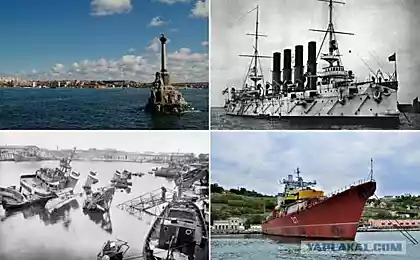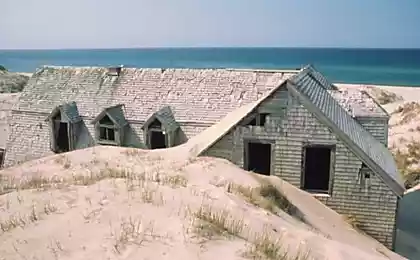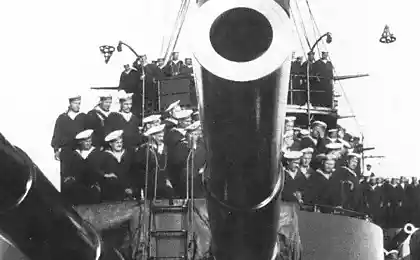935
Masking ships
Just do not believe that warships might look like. It seems that they painted clowns, stragglers from a traveling circus. Full asymmetry strips and cells. Unexpected diagonal and different bright colors. But it turns out that nearly 100 years ago, masked trial that way.
During the First World War the British and Americans, and the French, too, are facing a serious threat of German submarines that with enviable success destroyed and sank Allied ships.
All attempts to camouflage ships at sea have failed because one or the other to adapt to the constantly changing camouflage the water and the sky did not succeed. Any combination of colors, hides in one situation, betrayed with his head in the other.
And then a British artist, and an officer of the Navy Norman Wilkinson (Norman Wilkinson) has invented a new scheme of disguise, which was based on fashion trends of fine arts at the time, first of all - Cubism.
(18 photos)
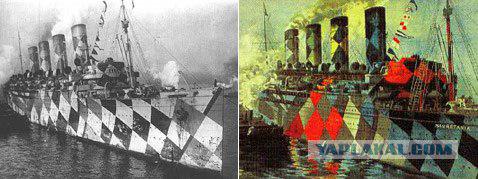
Rather than hide the ship, trying to paint it in its entirety in any similar environment-color, Wilkinson offered to paint abstractly ships - "crashing" body unexpected lines, create illusory plane, angles, and so on.
The idea was taken on board. British named the innovative technique of masking "blinding coloring» («Dazzle Painting»), and the Americans - "turmoil" or "commotion» (Razzle Dazzle). And it worked.
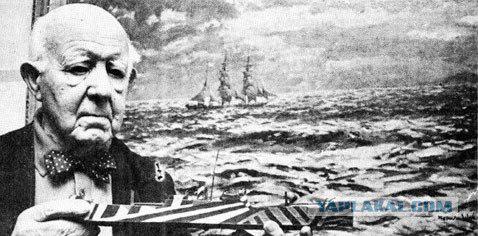
The fact that German submariners had to find the enemy visually and not aiming at the ship itself - because it was moving - and tried to send a torpedo at the place where the ship will be at the time of arrival of the projectile. Too early or late start was designated a miss.
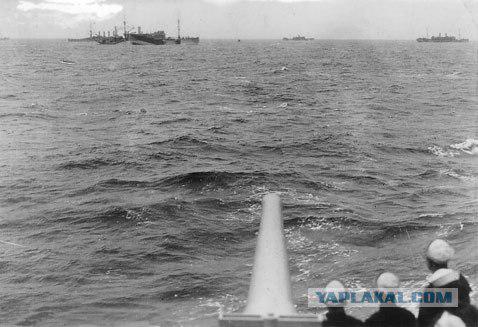
Accordingly, the captain of the submarine was necessary to precisely determine the course and speed of the target, but by what he saw through the periscope, it was difficult to even understand where the nose of the ship, such as noses, and that it generally is.
Silhouette of a blurred. The ship could appear smaller than it actually is partly merged with the water, "connect" with the sky and so on. In short - the devil knows what.
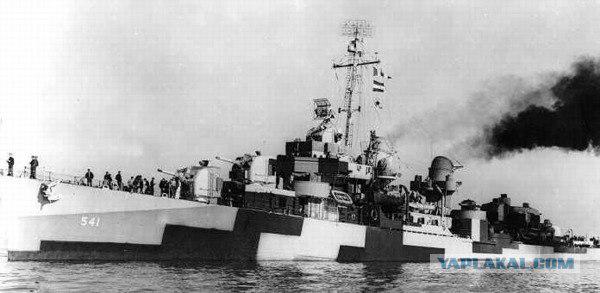
It should be noted that for the design of camouflage were involved in these artists. At first, almost every vessel had its own distinctive "cubic" color, with figures often on different sides were very different.
Later, during the war, have been developed standard types and art of disguise, with an abstract painting began to receive not only the military but also passenger ships.
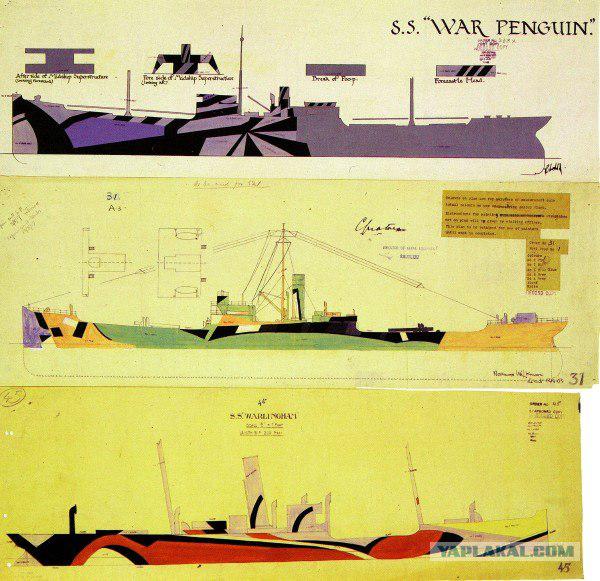
Unfortunately, it has not been preserved color photographs of the then ships, and because they were not "zebras" - they are masked in different and sometimes very vivid colors. They say the sea convoy of these "ships of parrots" looked simply stunning.
With the end of the First World War ended, and the massive use of "blinding painting" in the Navy. There were several reasons.
Thus, there was an effective aviation - air painted ships were very well marked. In addition, by the sailors never really liked the painting of their ships in such a "non-military means."
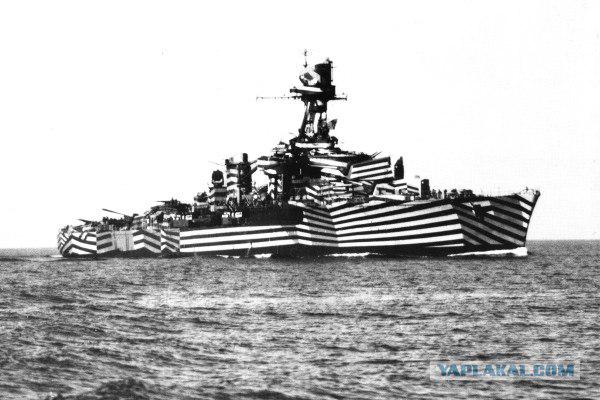
US Navy, like the British, tried to return to the "confusion" at the end of World War II - after the Japanese destroyed the aircraft. And indeed protect "painting" their ships from enemy submarines (by the way, experiments were carried out with tanks and jeeps;
However, the third coming from happening - advanced radar, sonar and other equipment, eventually eliminating the need for a visual target detection.

and here

Here
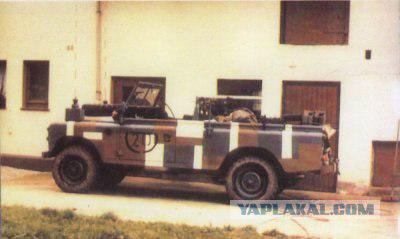
Thus, warships quickly repainted in its present, "foggy gray" color, and Cubism returned to where it took Wilkinson.
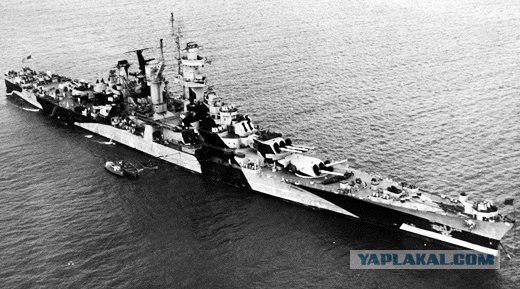
Here

Here

Here
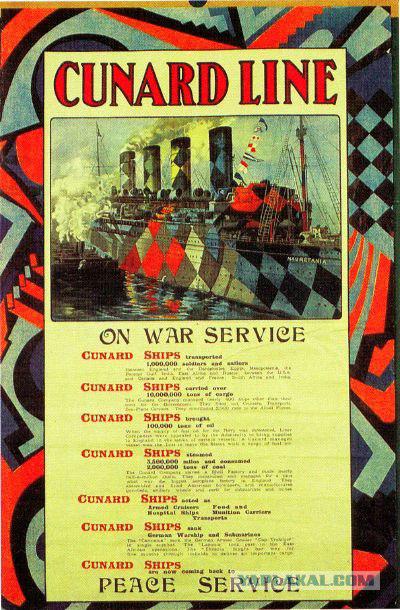
Here

Here
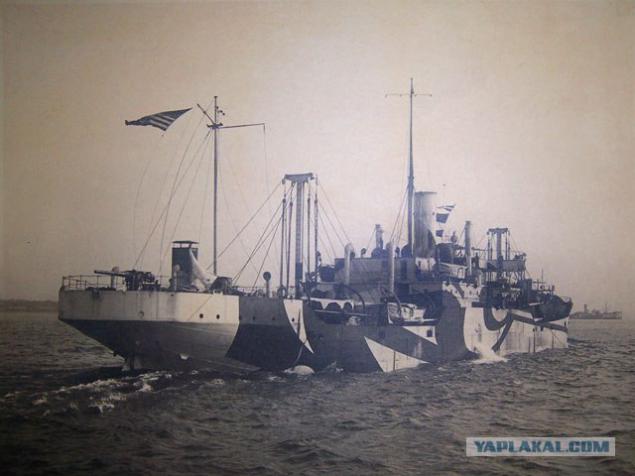
Here
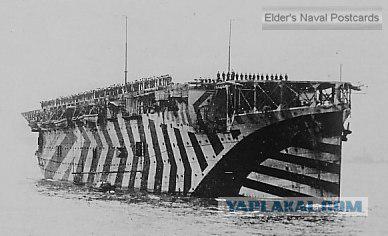
Here
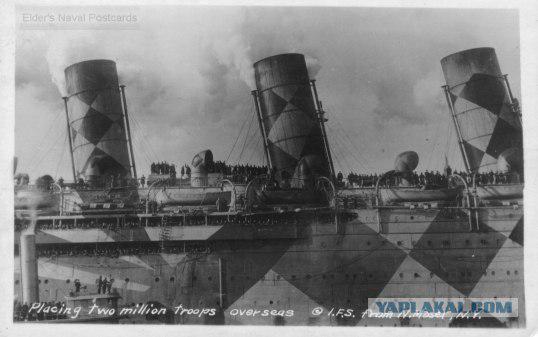
taken from
© www.membrana.ru/articles/technic/20...1/03/181400.htm
gotouring.com/razzledazzle/articles/dazzle.html
www.emlra.org/articles/berlin_brigade.htm

Source:
During the First World War the British and Americans, and the French, too, are facing a serious threat of German submarines that with enviable success destroyed and sank Allied ships.
All attempts to camouflage ships at sea have failed because one or the other to adapt to the constantly changing camouflage the water and the sky did not succeed. Any combination of colors, hides in one situation, betrayed with his head in the other.
And then a British artist, and an officer of the Navy Norman Wilkinson (Norman Wilkinson) has invented a new scheme of disguise, which was based on fashion trends of fine arts at the time, first of all - Cubism.
(18 photos)

Rather than hide the ship, trying to paint it in its entirety in any similar environment-color, Wilkinson offered to paint abstractly ships - "crashing" body unexpected lines, create illusory plane, angles, and so on.
The idea was taken on board. British named the innovative technique of masking "blinding coloring» («Dazzle Painting»), and the Americans - "turmoil" or "commotion» (Razzle Dazzle). And it worked.

The fact that German submariners had to find the enemy visually and not aiming at the ship itself - because it was moving - and tried to send a torpedo at the place where the ship will be at the time of arrival of the projectile. Too early or late start was designated a miss.

Accordingly, the captain of the submarine was necessary to precisely determine the course and speed of the target, but by what he saw through the periscope, it was difficult to even understand where the nose of the ship, such as noses, and that it generally is.
Silhouette of a blurred. The ship could appear smaller than it actually is partly merged with the water, "connect" with the sky and so on. In short - the devil knows what.

It should be noted that for the design of camouflage were involved in these artists. At first, almost every vessel had its own distinctive "cubic" color, with figures often on different sides were very different.
Later, during the war, have been developed standard types and art of disguise, with an abstract painting began to receive not only the military but also passenger ships.

Unfortunately, it has not been preserved color photographs of the then ships, and because they were not "zebras" - they are masked in different and sometimes very vivid colors. They say the sea convoy of these "ships of parrots" looked simply stunning.
With the end of the First World War ended, and the massive use of "blinding painting" in the Navy. There were several reasons.
Thus, there was an effective aviation - air painted ships were very well marked. In addition, by the sailors never really liked the painting of their ships in such a "non-military means."

US Navy, like the British, tried to return to the "confusion" at the end of World War II - after the Japanese destroyed the aircraft. And indeed protect "painting" their ships from enemy submarines (by the way, experiments were carried out with tanks and jeeps;
However, the third coming from happening - advanced radar, sonar and other equipment, eventually eliminating the need for a visual target detection.

and here

Here

Thus, warships quickly repainted in its present, "foggy gray" color, and Cubism returned to where it took Wilkinson.

Here

Here

Here

Here

Here

Here

Here

taken from
© www.membrana.ru/articles/technic/20...1/03/181400.htm
gotouring.com/razzledazzle/articles/dazzle.html
www.emlra.org/articles/berlin_brigade.htm

Source:

